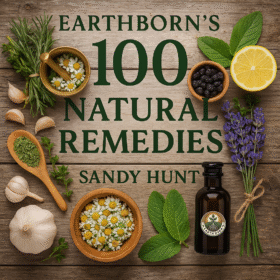
Platostoma rotundifolium, more affectionately known as Sore-eye bush, is a perennial herb native to Southern Africa, especially well-rooted in South African traditional gardens and medicine. A member of the mint family (Lamiaceae), this resilient herb has long played a role in rural communities for its healing properties, particularly for eye-related ailments. Its dense, rounded foliage and aromatic nature make it a charming and purposeful plant for home gardens.
💊 Medicinal Benefits
The Sore-eye bush is treasured for its antimicrobial and anti-inflammatory properties. Its leaves are rich in terpenoids and phenolic compounds, which help reduce eye irritation and fight infections. Traditionally, a decoction is made from the leaves and used as an eye rinse. It is also known to soothe minor skin conditions and is sometimes included in natural remedies for fevers and colds.
📅 When to Plant in South Africa
Plant Sore-eye bush in early to mid-Spring (September to October) for best results. Seeds germinate within 7–14 days, and seedlings are typically ready for transplanting after 4–6 weeks. You can expect your plant to be harvest-ready within 60–90 days after sowing.
🏡 Where to Plant
Choose a sunny to semi-shaded spot in your herb or medicinal garden. Sore-eye bush does well in beds, borders, or permaculture settings where it has space to expand and flourish.
🌞 Soil, Water & Sunlight Requirements
✅ Soil :
Prefers well-draining, loamy soil enriched with compost or aged manure. Neutral to slightly acidic pH (6.0–7.0) is ideal.
✅ Sunlight
Thrives in full sun but tolerates partial shade. At least 5–6 hours of direct sunlight daily promotes vigorous growth.
✅ Water
Water moderately—keep the soil moist but not soggy. Overwatering can lead to root rot. Reduce watering slightly in cooler months.
✅ Fertilize
Use a balanced organic fertilizer once a month during the growing season to boost foliage and flower production.
✅ Spacing
Space plants 30–45 cm apart to ensure good airflow and reduce the risk of fungal issues.
✅ Seeds germinate
Seeds germinate within 1–2 weeks under warm conditions (18–24°C). Lightly cover them with soil and keep moist.
✅ Transplanting
Transplant when seedlings have 4–6 true leaves. Be gentle with roots and plant in the late afternoon or on an overcast day to reduce transplant shock.
✅ Maturity height
Grows to a height of 50–80 cm, with bushy, rounded growth habit.
🍓 Flowers & Fruit
Sore-eye bush produces tiny tubular purple to blue flowers that are highly attractive to bees and beneficial insects. It does not produce significant fruit but is primarily grown for its medicinal leaves.
🌼 Companion Plants
Great companions include:
- Lavender – deters pests and complements its calming scent.
- Rosemary – shares similar soil and sunlight preferences.
- Thyme – another low-growing herb that helps retain soil moisture and prevent weeds.
🐛 Common Pests
Watch out for:
- Aphids – especially during new growth stages.
- Spider mites – in hot, dry weather.
Combat pests using organic neem spray or a mild insecticidal soap.
🧺 Harvesting
Harvest leaves once the plant is well-established, ideally just before flowering for maximum potency. Pick in the morning after dew has dried for the highest essential oil concentration.
🫙 Storage
Dry the leaves in a cool, dark, and airy space, then store in an airtight container. Fresh leaves can also be stored in the refrigerator for up to one week.
🧪 How to Use as Medicine
To prepare an eye wash, boil a handful of leaves in clean water, let cool, strain thoroughly through sterile cloth, and apply with a clean dropper or sterile cloth. It’s also infused in teas for calming minor inflammation. Always consult a herbalist or health practitioner before internal or topical use.
Check out these remedies
🎉 Fun Fact
Despite its common name, “Sore-eye bush,” this plant is actually known to soothe sore eyes, not cause them! Its unusual name originates from its historical use in traditional eye treatments.
⚠️ Caution
Only use water-based extractions (like teas or rinses) from correctly identified and pesticide-free plants. Do not apply any herbal preparation to the eyes unless it is sterile and properly prepared. Not recommended for use during pregnancy without professional guidance.
🌿 Ready to grow your own natural eye remedy?
Add Sore-eye bush to your herbal garden and experience the power of indigenous South African healing firsthand.
🌍 #EarthBornGrower #HerbalHealing #SoreEyeBush #NaturalRemedies


 **Meet Sprout!** Sprout is your friendly gardening companion at Earthborn, always ready with helpful advice on plant care, medicinal herbs, and natural gardening solutions. From seedling to harvest, Sprout provides expert guidance to nurture your garden and your well-being—making gardening easy, fun, and naturally rewarding.
**Meet Sprout!** Sprout is your friendly gardening companion at Earthborn, always ready with helpful advice on plant care, medicinal herbs, and natural gardening solutions. From seedling to harvest, Sprout provides expert guidance to nurture your garden and your well-being—making gardening easy, fun, and naturally rewarding.

[…] provides incredible healing tools—use them wisely and with respect.See how to grow the plant here#NaturalRemedies #SoreEyeBush #HerbalHealing […]